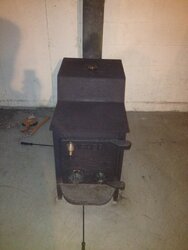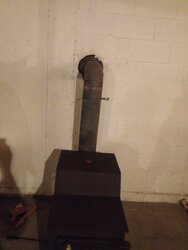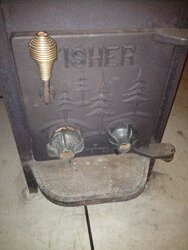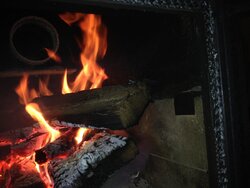When we bought the house last year, it came with two wood stoves. A cute little jotul in the living room with a glass front and can only take 14" logs, although rated for around 1000sqft, which is perfect for our small house, on cold nights it's just not enough. In the basement came a giant stove which we burn for a couple days and it heats the whole house from the inside out. But being so large, we don't use it that much. Since finding your forum and learning more about burning wood and setting the fire correctly, we burn a lot less wood FAR more efficiently.
here is my fisher. Pretty sure it's a Momma Bear. measuring in at 30" back to front edge of plate.
Very curious as to how old it is. I also found it's missing the second row of bricks inside, but no clips to hold a second row of bricks either. Is the gasket supposed to be on the door, or the door jam? I took the old one out to replace from the jam, but found a large amount of epoxy in the door groove as well.




here is my fisher. Pretty sure it's a Momma Bear. measuring in at 30" back to front edge of plate.
Very curious as to how old it is. I also found it's missing the second row of bricks inside, but no clips to hold a second row of bricks either. Is the gasket supposed to be on the door, or the door jam? I took the old one out to replace from the jam, but found a large amount of epoxy in the door groove as well.





